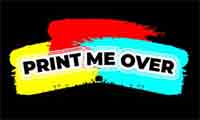In the world of digital graphics and design, you’ll often come across terms like vector and raster images. These two types of image formats have distinct characteristics and are used in different scenarios. Let’s explore the differences between vector and raster images in simple terms.
Raster Images
Raster images, also known as bitmap images, are made up of tiny colored squares called pixels. Each pixel holds specific color information, and when combined, they form the complete image. Raster images are resolution-dependent, which means they have a fixed number of pixels and a defined resolution, such as 1920×1080 pixels. Common file formats for raster images include JPEG, PNG, and GIF.
When you zoom in on a raster image, you’ll start to see individual pixels, which can result in a loss of image quality and clarity. Scaling up a raster image too much can lead to pixelation, where the image appears blocky or distorted. Raster images are ideal for complex photographs, detailed illustrations, and images with intricate color gradients or effects.
Vector Images
Vector images, on the other hand, are created using mathematical formulas that define lines, curves, and shapes. Instead of pixels, vector images use points, lines, and curves to represent objects and colors. This means that vector images are resolution-independent and can be scaled up or down without any loss of quality. Common file formats for vector images include SVG, AI, and EPS.
When you zoom in on a vector image, it remains sharp and crisp because it recalculates the shapes and lines based on the new zoom level. Vector images are perfect for graphics that require scalability, such as logos, icons, typography, and illustrations with clean, defined shapes. They are also ideal for print materials like business cards and banners, as they can be scaled to any size without losing clarity.
Key Differences
The main difference between vector and raster images can be summarized as follows:
- Scalability: Vector images can be scaled to any size without losing quality, while raster images may lose quality and become pixelated when scaled up.
- Resolution: Raster images have a fixed resolution and are composed of pixels, whereas vector images are resolution-independent and based on mathematical formulas.
- Complexity: Raster images excel in representing detailed photographs and complex visual effects, while vector images are best suited for graphics with clean shapes, lines, and typography.
Conclusion
In a nutshell, raster images use pixels to form an image and are great for detailed and complex visuals. Vector images, on the other hand, use mathematical formulas to create scalable graphics with sharp edges and clean shapes. By understanding the differences between these two image formats, you can choose the most appropriate one for your specific design needs and ensure that your digital creations look their best.

